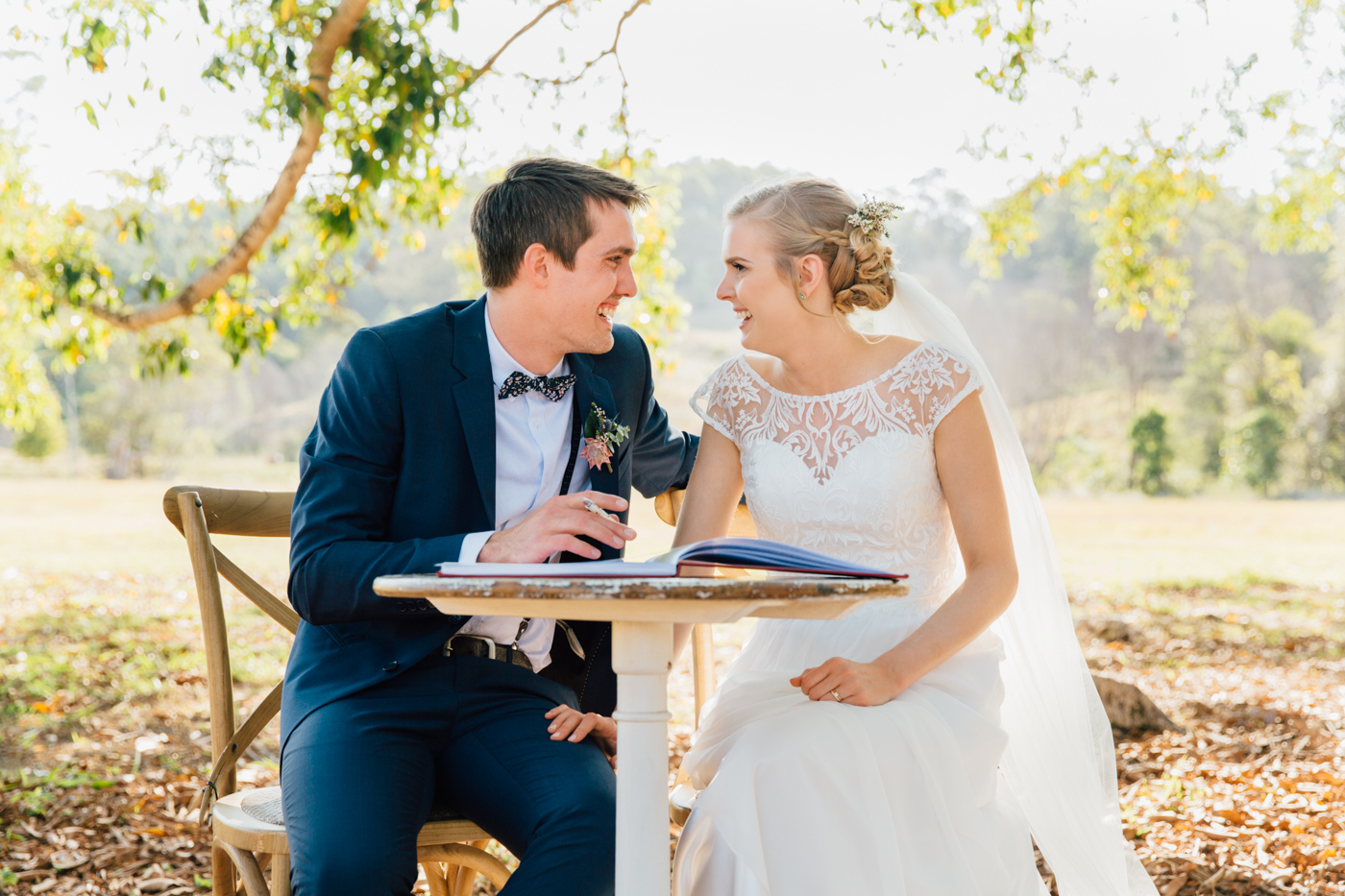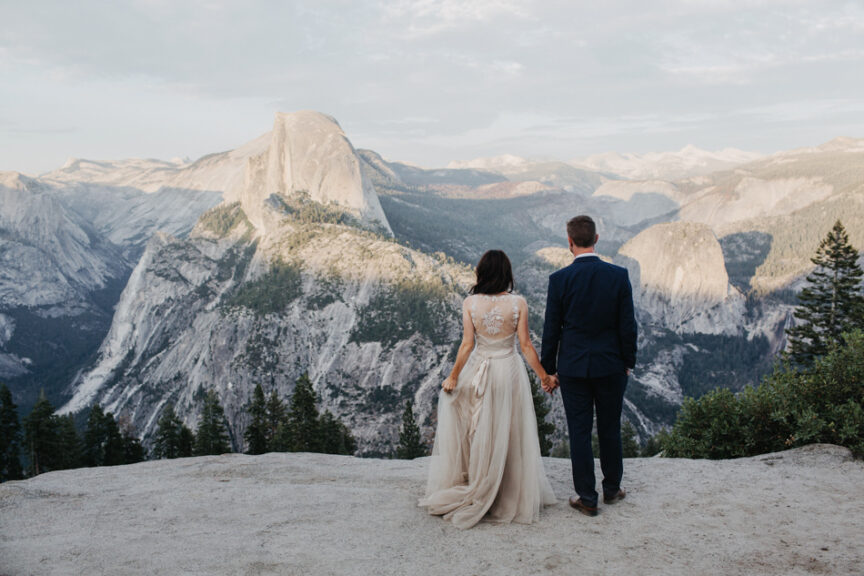
If you’ve chosen to elope, you’re probably trying to avoid the stress, organisation and price tag that comes with a traditional wedding, right? Although eloping in an overseas destination or somewhere a little closer to home here in Australia can definitely be easier on the day, it still takes a little research, time and planning to make sure all of the formalities are, you know, legit. Don’t know where to begin? We’ve done the hard work for you and sourced some top tips for eloping overseas and in Australia.
-
Location, location, location
The first and probably most difficult step is deciding where you want to elope. A quick Google search and the snowy mountains in Whistler, the tropical beaches of Bora Bora, the islands of The Whitsundays and all sorts of incredible elopement destinations from around the world are at your fingertips. Our advice? Let things like ideal aesthetic, climate and budget influence your decision.
OVERSEAS ELOPEMENTS
Planning an overseas elopement? We’ve done a lot of the legwork for you by providing destination-specific wedding guides for overseas destinations. From Bali to Hawaii, we’ve got you covered. Below are some of the wedding guides for some of the more popular elopement locations for you to check now.
- Your Wedding Guide for Thailand
- Your Wedding Guide for Hawaii
- Your Wedding Guide for Fiji
- Your Wedding Guide for Bali
- Your Wedding Guide for The Maldives
It’s important to contact the consulate in the country you choose to check for any updates on regulations due to Covid-19, but our guides will help save you hours of research time and narrow down your dream location. Also, you’ll want to gather extra information and exact requirements (things do change ~ more than ever since Covid!) and any current safety precautions. Again, check our long list of country-specific wedding guides if the country you are thinking about isn’t listed above.
If you’re in a same-sex couple, and considering a wedding in the US, look up the LGBTI+ rights and marriage laws for your chosen location on the US government travel website.
There’s also a fabulous list of countries that grant legal recognition to same sex couples choosing to marry there at the Pew Research Centre’s site.

Image by Sara Byrne
Visit our handpicked gallery of stunning destination wedding locations in Australia here.
2. Finding a Marriage Celebrant
With the power of the internet and social media, you can find the perfect celebrant on Instagram, Facebook or Google in a matter of seconds. Alternatively, ask friends, family, other vendors or check at your local registry office for more options. Wanting to get married in a church or chapel? You’ll have to find a religious celebrant or minister to deliver the official ceremony.
OVERSEAS: If you’re getting married overseas your celebrant must have the authority to carry out a legal wedding in that country – you’ll want to triple check this! Overseas countries may also have a range of other conditions for celebrants delivering legal wedding ceremonies in order for them to be considered valid back in Australia.
If you want to skip all the fuss, consider having a symbolic ceremony overseas and a quick, official one back home (even just to sign the paperwork!).

Image by IZO Photography
3. Submitting a Notice of Intended Marriage
Now here’s where the preparation kicks in. Sure, you can have an easy, breezy elopement ceremony on a New Zealand mountaintop, but no matter where your wedding is, you’ll need to submit a Notice of Intended Marriage to your celebrant no less that one month and no more than 18 months before the big day.
You will also need to provide your celebrant with evidence of identity, date and place of birth and termination of any prior marriages in advance. So, get your papers sorted!
4. Witnesses
For a marriage to be valid in Australia you’ll need two witnesses (as well as your celebrant) to be present at the ceremony and signing of marriage certificates. If you’re after a super-intimate ceremony, consider skipping the tiny guest list and using photographers or videographers as your witnesses.
5. Sign the Marriage Certificate
You, your new spouse and the witnesses will need to sign three marriage certificates on the day as proof of marriage and validity back in Australia. Some overseas certificates require all parties to be in the country for a specific amount of time or undertake religious ceremonies while overseas. Double check all of the finer details via the destination’s consulate and through our wedding guides tailored to each country.

Image by Daisy & the Duke Photography
6. File the marriage certificate
If you elope in Australia, your celebrant must file the marriage certificate within 14 days of the ceremony. No slacking off!
OVERSEAS: If you get married overseas, hold onto your marriage certificate as it is the only proof of marriage you’ll have when you arrive back in Australia. You will also need the original copy of this to change your name and other identification purposes. Your overseas elopement will be legal when you arrive back home if it was recognised as valid in the country that you said ‘I do’ in and if it is recognised as legal and valid in Australia.
See all the official conditions for legal marriage in Australia via government websites.
The Backup Plan
If all else fails, remember that you can have the best of both worlds. In the end it’s your day and you can always have the magical beach ceremony you’ve always dreamt of and make it legal back home either before or after the big day.
Prepare Yourself for Family and Close Friends’ Reactions
When deciding to elope, it is essential to understand that not everyone will support your choice. Planning an elopement overseas can be exciting but also daunting if you know that your closest family and friends might not celebrate it. Consider informing your parents about the plan before telling others, and certainly before eloping, to prevent any feelings of surprise or hurt afterwards.
Additionally, there are many other ways for close family and friends to be involved in the special day, such as sending photos from the elopement or throwing a reception after it has occurred. It is best to express your plans through personal means, however, as announcing it on social media can feel insensitive and hurtful to those closest to you.
After the Elopement
Consider throwing an elopement afterparty with those you love. The options are endless: Instead of having the full-blown wedding reception, you could opt for something more intimate like a “chef’s table” that involves being served multiple courses from the chef and topped off with wine pairings. Or, you could do a casual backyard BBQ. Share stories of the day and showcase some beautiful, intimate images you captured on your special day.
Alternatively, you could leave the celebration one year later to mark your anniversary.
Related: Grab your FREE copy of the latest Great Destination Weddings’ digital magazine here!
Header Photo by Sara Byrne.


